di Rossano Morici
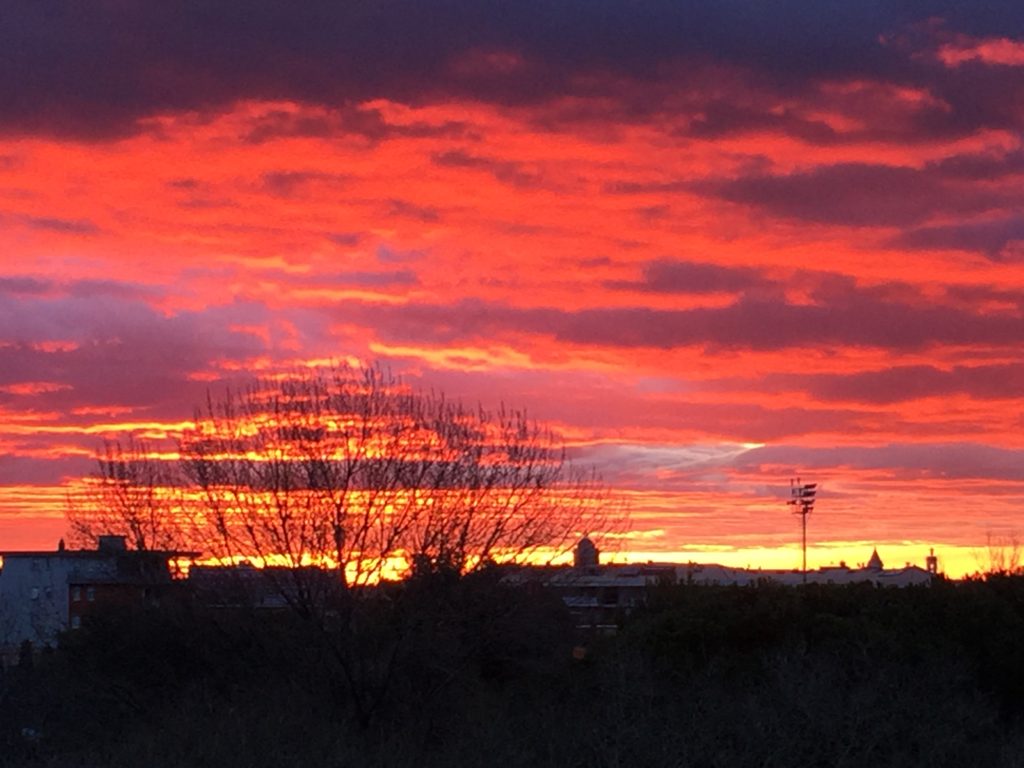
Dal balcone della mia abitazione di Senigallia, esposto a est, posso vedere ogni giorno il sorgere del sole, ammirare e fotografare l’alba. In particolare dal 2018 ad oggi ho scattato numerose foto di albe con colori rossi accesi. Però da studioso di meteorologia, storia del clima e di arte pittorica mi sono chiesto il perché di queste albe insolite.
La bellezza indubbia dei colori di questi eventi, mi ha fatto venire in mente i numerosi dipinti di William Turner anch’essi colorati in modo intenso. Perché le più importanti opere di Turner avevano colori così accesi? Ignaro delle cause, il grande artista immortalava questi fenomeni di colore nelle sue più importanti opere.
Da appassionato di storia del clima ho voluto approfondire il tema ed ho cercato la risposta del perché gran parte delle opere del grande pittore inglese avessero colori così infuocati.
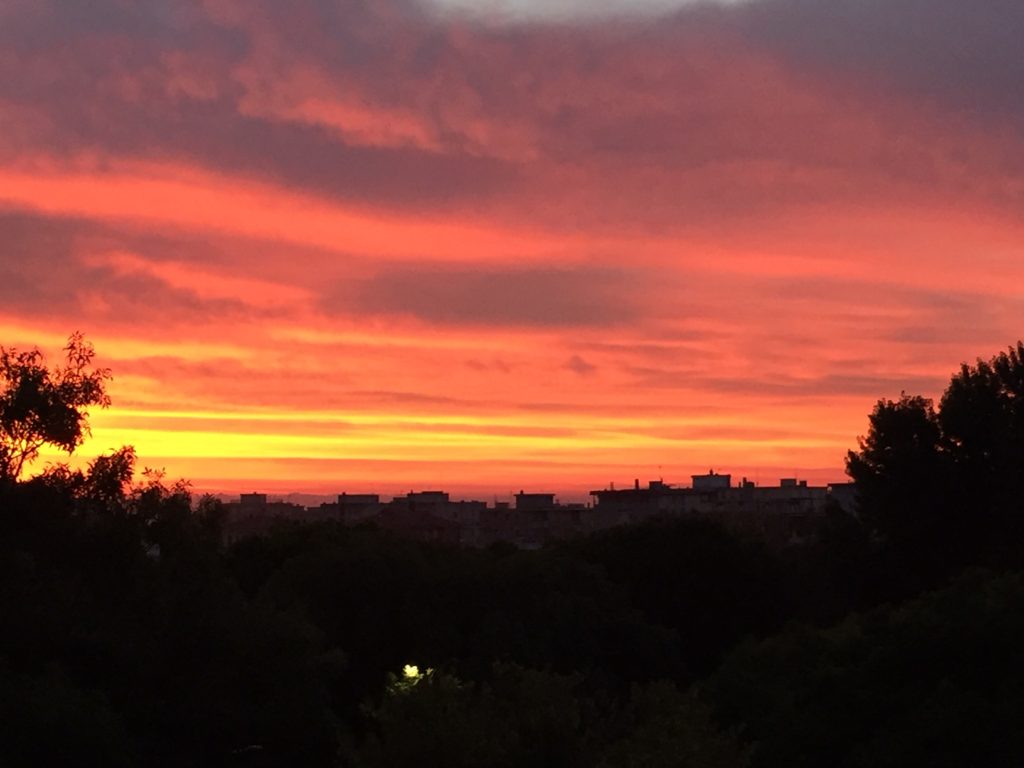
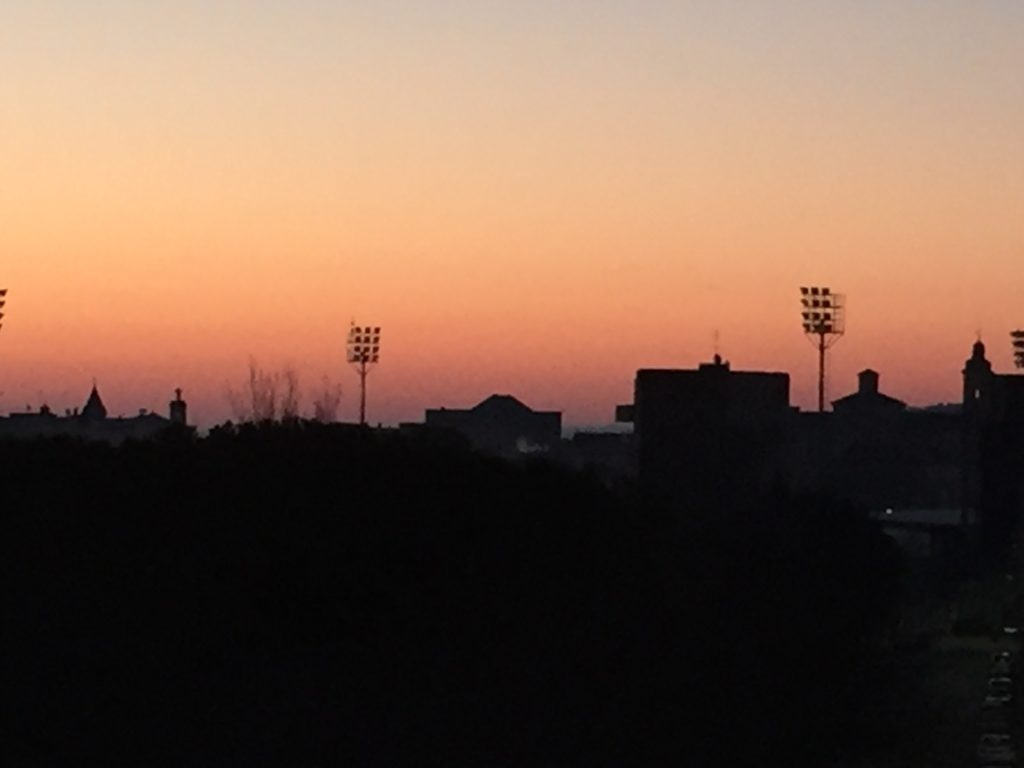
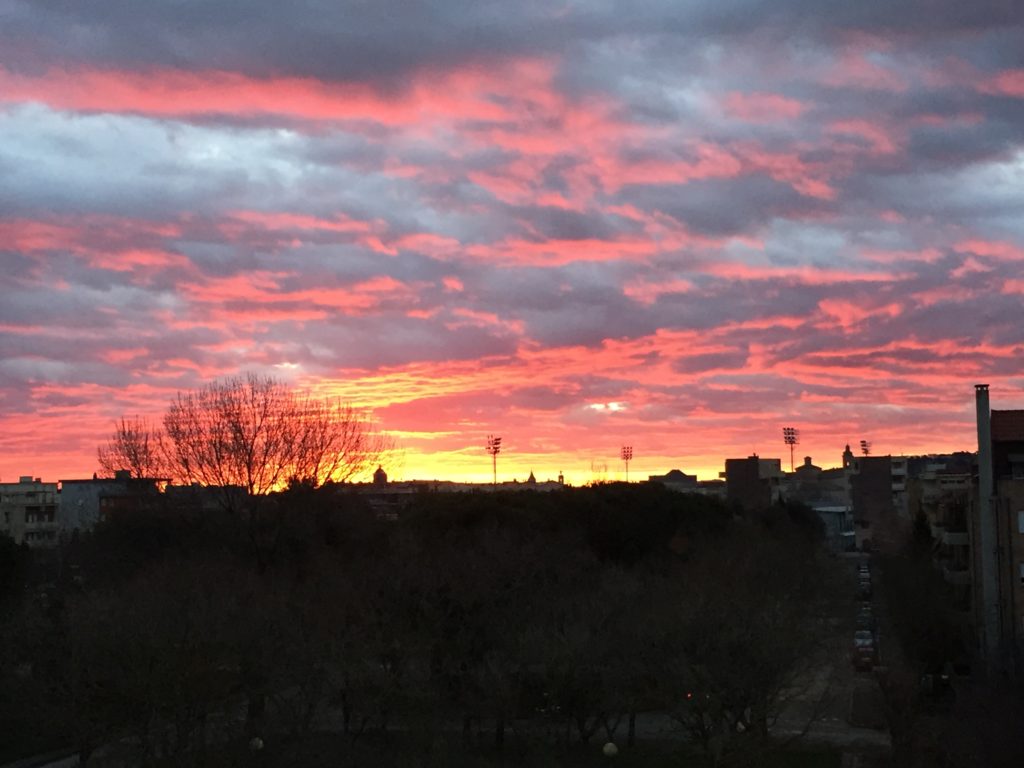
Per scoprire l’arcano ho cercato di fare un viaggio immaginario indietro nel tempo e mi sono imbattuto nell’aprile del 1815 nella spaventosa eruzione esplosiva del monte Tambora, avvenuta in Indonesia. Il monte Tambora, alto 4300 metri; dopo l’esplosione, persa la cuspide, non superava i 2850 metri. L’esplosione del Tambora sconvolse il clima del globo, portando temperature molto basse, neve e piogge, carestie ed epidemie per alcuni anni. Settantasette anni dopo, nell’agosto del 1883, un’altra grande eruzione esplosiva ha interessato il vulcano Krakatoa; anche l’esplosione del Krakatoa, sebbene inferiore a quella del Tambora, ebbe effetti sul clima mondiale che durarono alcuni anni, con l’abbassamento delle temperature in tutto l’emisfero nord. Le Marche non furono risparmiate dagli effetti climatici di questi due grandi eventi.
I climatologi e gli storici del clima hanno appurato che la finissima cenere vulcanica in atmosfera e troposfera, impediva al sole di raggiungere nella pienezza il suolo, e rappresentava la causa primaria di albe e tramonti incandescenti, con colori che andavano dal rosso al giallo, dal verde al violaceo. Settant’anni dopo Turner, anche il pittore norvegese Edvard Munch, dipinse alcune sue opere con colori accesi dovuti all’effetto delle ceneri del Krakatoa.
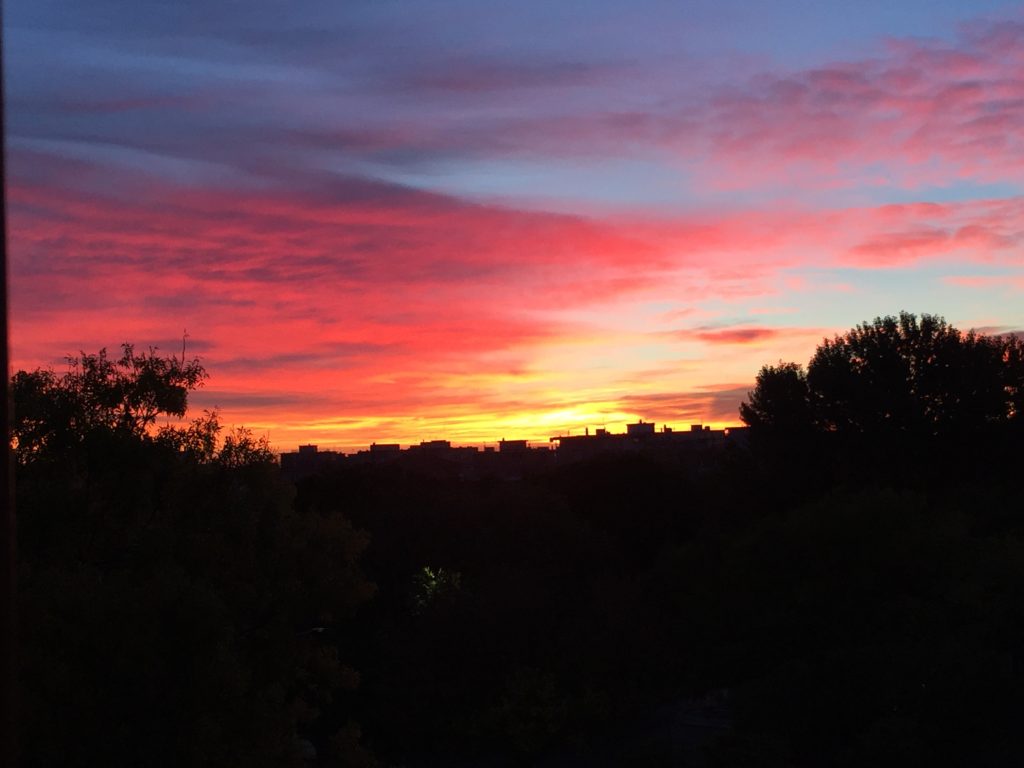
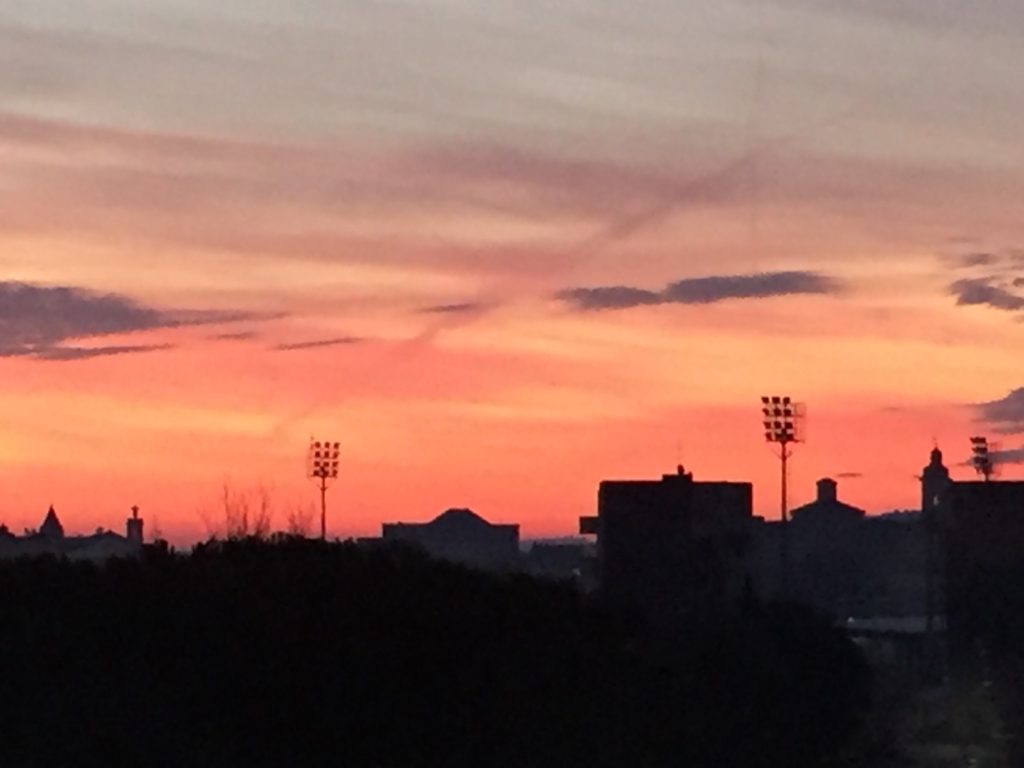
Concluso questo viaggio immaginario nell’Ottocento, sono ritornato nella realtà di Senigallia con le albe super colorate che ho fotografato. Mi verrebbe da pensare che anche questa volta la causa poteva essere attribuita alle ceneri di eruzioni vulcaniche recenti, anche se non intense e catastrofiche rispetto a quelle appena descritte. Mi sono quindi catapultato alla ricerca di eventuali eruzioni vulcaniche di una certa consistenza avvenute in tempi recenti. Ed infatti le ho trovate nel sito dell’INGV e nei media. Nel 2017 il vulcano indonesiano Agung ha eruttato il 27 novembre e il 24 dicembre, certamente non con la violenza dell’eruzione del 1963, anno del famoso nevone. Tuttavia anche queste recenti eruzioni hanno prodotto ceneri finissime finite in atmosfera; poi si sono verificate due ulteriori eruzioni a luglio 2018 e quella più grande alle fine dell’anno 2018.
Il 2018 è risultato un anno in cui i vulcani sparsi in tutto il pianeta si sono risvegliati: l’attività vulcanica ha dapprima interessato il Kīlauea delle isole Hawaii (aprile); poi il Guatemala con l’eruzione esplosiva del Volcàn de Fuego (3 giugno), che ha emesso una densa nube di cenere che è risalita in atmosfera per alcuni chilometri, e quindi il vulcano Anak Krakatoa (figlio del più noto Kratatoa) il 22-23 dicembre. Quest’ultima eruzione esplosiva, oltre alla consueta imponente colonna di fumo e ceneri, ha provocato anche un devastante tsunami con onde anomale alte sino a 20 metri che hanno colpito le coste delle isole di Sumatra e di Giava; ed inoltre il vulcano sorto dopo la spaventosa esplosione del Krakatoa dell’agosto 1883, attualmente è alto 110 metri, rispetto all’altezza originaria di 338 metri che raggiungeva prima dell’esplosione del 23-23 dicembre 2018.
Anche in Italia l’attività vulcanica si è intensificata: nel 2017 si sono verificare eruzioni dell’Etna dal 27 febbraio al 1° marzo, poi un’altra eruzione il 15 marzo. Nel 2018 ulteriori eruzioni sono avvenute dal 24 al 26 dicembre.
Nel 2019 l‘Etna ha seguitato ad eruttare il 30 maggio, quindi il 14 e 19 luglio, il 16 e il 30 settembre ed il 12 ottobre.
Anche lo Stromboli ha iniziato la sua attività eruttiva nel 2017: il 27 luglio la prima eruzione, proseguita il 23 ottobre, il 1° novembre ed il 1° dicembre.
Nel 2018 le eruzioni esplosive dello Stromboli si sono verificate il 7 e il 8 marzo, il 24 ed il 27 aprile ed il 25 dicembre. Nel 2019 ulteriori eruzioni esplosive dello Stromboli si sono verificate il 3 luglio ed il 28 agosto.
Secondo il mio parere la somma delle eruzioni avvenute nelle isole Hawaii, in Indonesia, in Guatemala e in Italia (anche se in tono notevolmente inferiore agli eventi prima citati) hanno prodotto una grande quantità di ceneri vulcaniche la cui presenza nell’atmosfera è la causa di albe così colorate.
La conferma che l’alba rossa a Senigallia è un fenomeno causato dalle ceneri vulcaniche mi è stata fornita da Anouncka Vasak (maître de conférences) una delle più importanti studiose francesi di storia del clima e del rapporto tra meteorologia e arte pittorica, con la quale sono in contatto da alcuni anni. La professoressa Anouchka Vasak ha collaborato e collabora tuttora con il professor Emmanuel Le Roy Ladurie, grandissimo storico francese, fondatore della storia del clima, che ho avuto l’onore di conoscere nella sua abitazione di Parigi. Anouchka Vasal è inoltre coordinatrice del “Réseau perception du climat”, rete internazionale di studiosi del clima e di temi che riguardano l’ambiente, coordinata da Anouchka Vasak, la quale mi ha nominato membro, di cui è capofila il Professor Emmanuel Le Roy Ladurie.
La Vasak, viste le foto sull’alba che le avevo inviato, mi ha risposto che il colore rosso delle stesse supera perfino i dipinti di Turner, che sono già di un colore intenso. Anche lei è dell’opinione che le ceneri prodotte da alcune eruzioni vulcaniche avvenute tra il 2017 e il 2019 siano le cause di questo fenomeno.
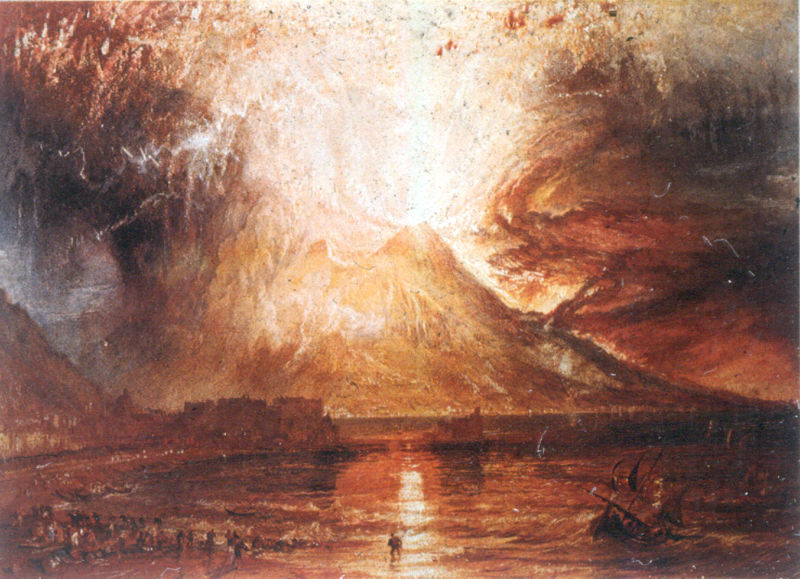
Red dawns in Senigallia
by Rossano Morici
From my balcony in Senigallia, facing east, I can see the sunrise every day, admire and photograph the sunrise. In particular, from 2018 to the present I have taken numerous photos of sunrises with bright red colors. However, as a researcher of meteorology, history of climate and pictorial art, I asked myself why these unusual dawns. The undoubted beauty of the colors of these events, brought to think about the numerous paintings by William Turner, also intensely colored. Why did Turner’s most important works have such bright colors? Unaware of the causes, the great artist immortalized these color phenomena in his most important works. As a passioned of the history of climate, I wanted to investigate the theme and I wanted to find the reason why most of the works of the great English painter had such fiery colors. To discover the mystery, I tried to take an imaginary journey back in time and I came across in April 1815 in the frightening explosive eruption of Mount Tambora in Indonesia. Mount Tambora, 4300 meters high; after the explosion, having lost the cusp, did not exceed 2850 meters. The Tambora explosion upset the climate of the globe, bringing very low temperatures, snow and rain, famines and epidemics for a few years. Seventy-seven years later, in August 1883, another large explosive eruption affected the Krakatoa volcano; even the Krakatoa explosion, although lower than that of the Tambora, had effects on the world climate that lasted some years, with the lowering of temperatures throughout the northern hemisphere. The Marche Region were not spared from the climatic effects of these two great events. Climatologists and climate historians have realized that the very fine volcanic ash in the atmosphere and troposphere prevented the sun from reaching the soil, and that was the primary cause of incandescent sunrises and sunsets, with colors ranging from red to yellow, from green to violet. Seventy years later Turner, the Norwegian painter Edvard Munch, painted some of his works with bright colors due to the effect of Krakatoa’s ashes.
Concluding this imaginary journey in the nineteenth century, I came back to the reality of Senigallia with the super colorful sunrises that I photographed. I would think that this time too the cause could be attributed to the ashes of recent volcanic eruptions, even if not intense and catastrophic compared to those just described. I then catapulted in search of possible volcanic eruptions of a certain consistency occurred in recent times. And in fact I found them on the INGV website and in the media. In 2017, the Indonesian volcano Agung erupted on November 27th and December 24th, certainly not with the violence of the 1963 eruption, the year of the famous “big snow”. However, even these recent eruptions have produced very fine ashes in the atmosphere; then two further eruptions occurred in July 2018 and the largest at the end of the year 2018.
2018 was a year in which the volcanoes scattered throughout the planet awoke: volcanic activity first involved the Kīlauea of the Hawaiian Islands (April); then Guatemala with the explosive eruption of Volcàn de Fuego (3 June), which emitted a dense cloud of ash that went up in the atmosphere for a few kilometers, and then the volcano Anak Krakatoa (son of the more famous Kratatoa) on 22- December 23rd. This last explosive eruption, in addition to the usual imposing column of smoke and ashes, has also caused a devastating tsunami with anomalous waves up to 20 meters high that hit the coasts of the islands of Sumatra and Java; and furthermore the volcano arose after the terrible explosion of Krakatoa in August 1883, currently it is 110 meters high, compared to the original height of 338 meters that it reached before the explosion of 23-23 December 2018.
Also in Italy the volcanic activity has intensified: in 2017 there were eruptions of Etna from February 27th to March 1st, then another eruption on March 15th. In 2018 further eruptions occurred from 24th to 26th December. In 2019 Etna continued to erupt on May 30th, then on July 14th and 19th, on September 16th and 30th and on October 12th. Stromboli also began its eruptive activity in 2017: on 27th July the first eruption continued on 23rd October, 1st November and 1st December. In 2018, the explosive eruptions of Stromboli occurred on 7th and 8th March, 24th and 27th April and 25th December. In 2019 a further Stromboli explosive eruptions occurred on 3rd July and 28th August. In my opinion, the sum of the eruptions that took place in the Hawaiian Islands, Indonesia, Guatemala and Italy (although in a significantly lower tone than the events mentioned above) produced a large amount of volcanic ash whose presence in the atmosphere is the cause of so colorful dawns. The confirmation that the red dawn in Senigallia is a phenomenon caused by volcanic ash was provided me by Ms Anouchka Vasak (maître de conférences) one of the most important French researcher of climate history and the relationship between meteorology and pictorial art, with whom I have been in contact for some years. Professor Anouchka Vasak has collaborated and still collaborates with Professor Emmanuel Le Roy Ladurie, a great French historian, founder of the history of climate, that I had the honor of meeting in his home in Paris. Anouchka Vasak is also the coordinator of the “Réseau perception du climat”, an international network of climate research and environmental issues, headed by Professor Emmanuel Le Roy Ladurie. She appointed me as a member. I sent my photos to Ms Vasak, she replied that the red color of the down exceeds even the Turner’s paintings that are already of an intense color. She is also of the opinion that the ashes produced by some volcanic eruptions between 2017 and 2019 are the causes of this phenomenon.

Alla vista di colori così intensi, mi sono domandata anch’io quale potesse essere la causa. Interessante la risposta data da questo articolo. Grazie!
Ciao Rossano, tenace e illuminante, anche se ora per vedere un po’ di rosso bisogna aspettare provvidenziali (cromatiche!) eruzioni. Ti ringrazio del gentile invio e ti penso sempre alle prese col Tambora, che ci ha aiutato a spiegare le conseguenze devastanti anche nella vicina valle dell’Agno, come hanno recuperato storici locali da cronache contemporanee. complimenti vivissimi e grazie grandi. Luciano Chilese. Un abbraccio.